Text Analysis
Maybe the simplest place to begin is use the text provided within the image you are attempting to locate. Within the image, this could be building names, signs or advertisements or handwritten captions if you are working with a scrapbook. Even if only one in two hundred photos is labeled, that small amount of information is enough to begin making connections. You can try searching these terms (using Boolean quotes for exact phrases) in Google, but you’ll usually find that the algorithm is too broad for this type of historical research. Instead, try using the Newsbank newspaper resource available to you through the University, and refine results by adding time and location perameters.
Contents: First Example | Second Example | Third Example | Fourth Example
The examples I will be using for this presentation are from a scrapbook in our Special Collections titled Unidentified Family Album, 1920-1939 which I will use to illustrate the strengths and limitations of digital geolocation tools. Let’s go through a few methods for identifying locations through text elements:
✺
First Example
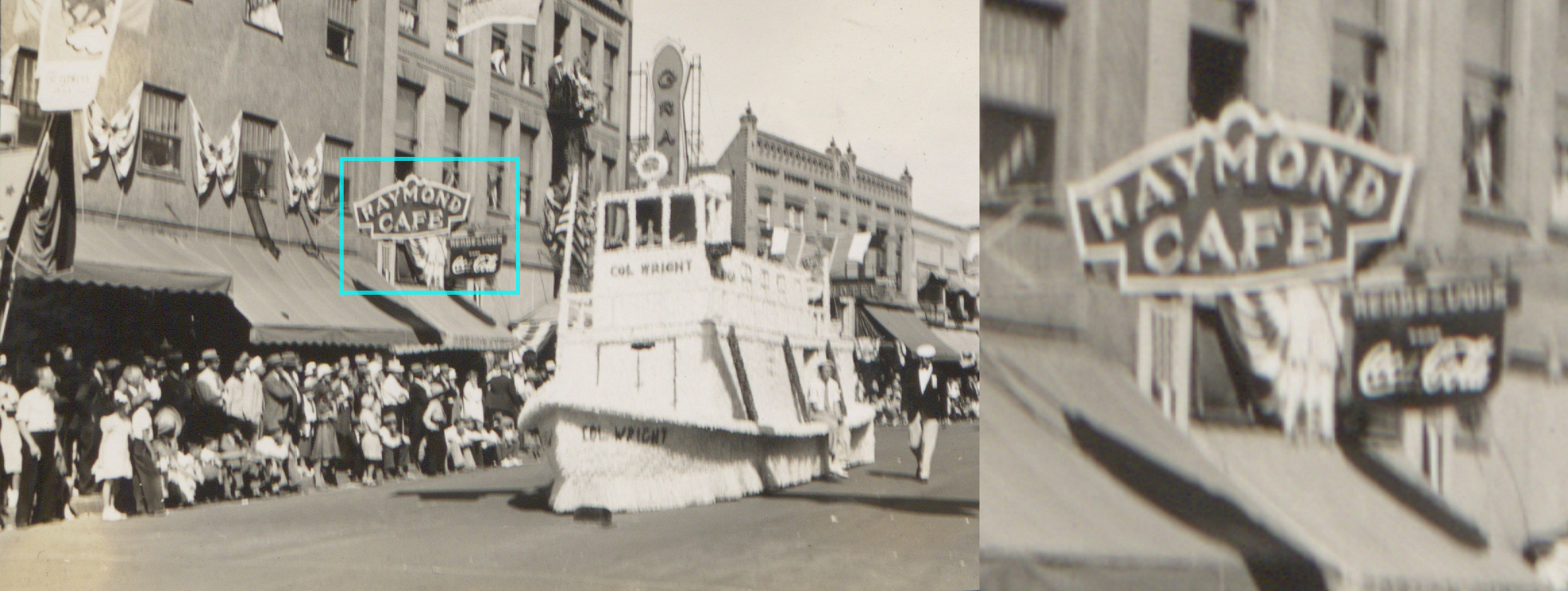
Searching for “Raymond Cafe” and narrowing it down by adding “Idaho,” we discover that this photo was taken on Main Street in Lewiston, and that the cafe’s owner was a prominent figure in Idaho’s Chinese American history. By examining the float next to the building, we can also determine that the photo was captured during the now-defunct Rose Parade, which took place annually in mid-June.
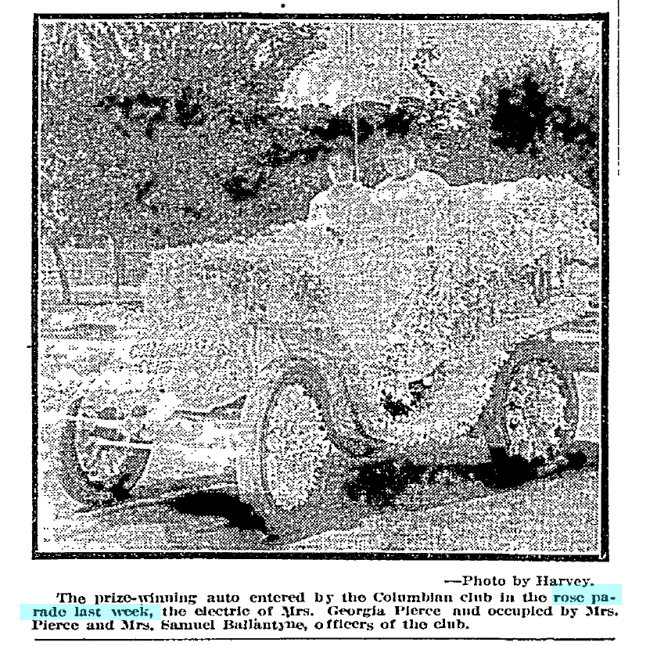
✺
Second Example
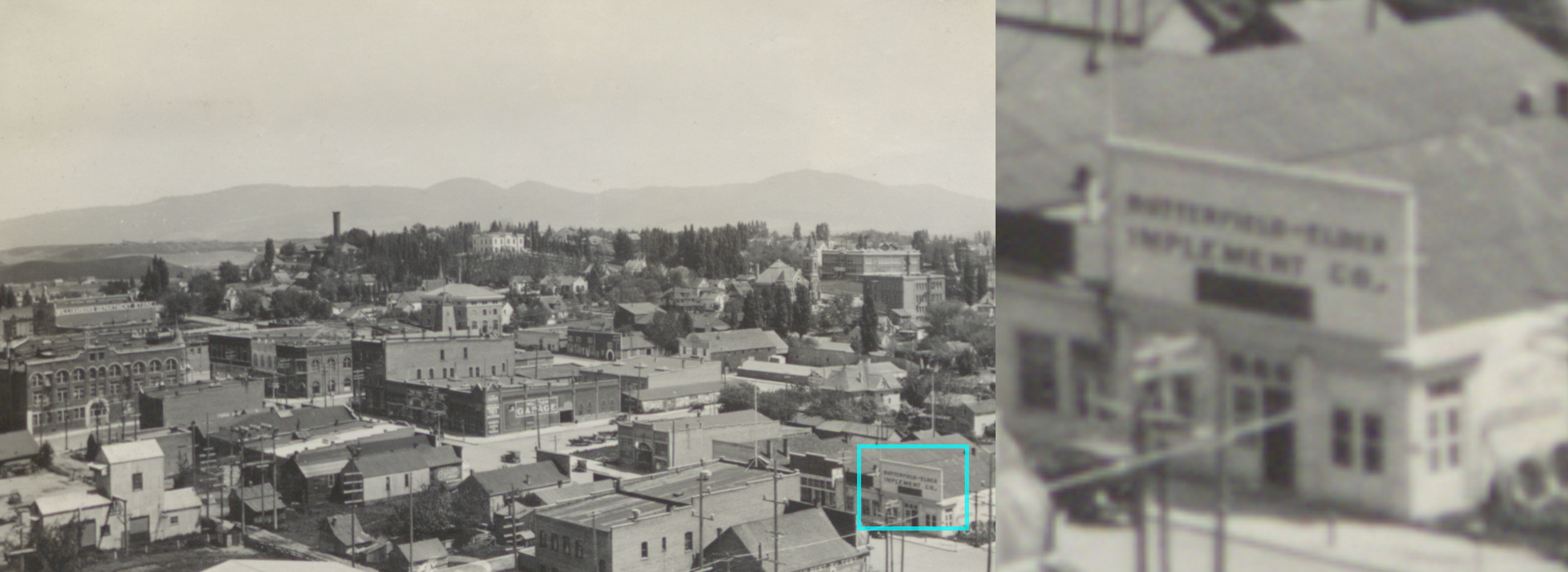
While there are actually a few structures here that are identifiable through reverse image searching, we can also identify this location with text. Zooming in on this little storefront, we can make out the business name “Butterfield-Elder Implement Company,” which appears in the article Federal Buildings of North Idaho as a business located in Moscow. Given the specificity of the name and its proximity to other photos in the collection, we can confidently conclude that this is an overhead shot of Moscow.
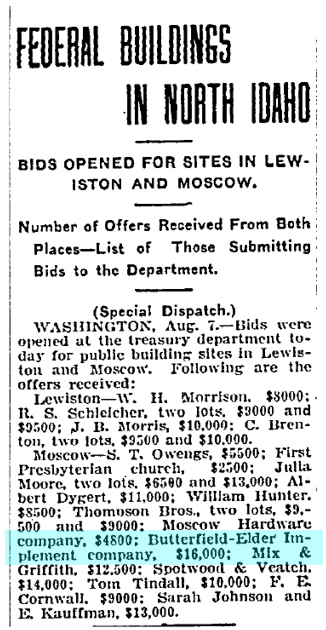
✺
Third Example
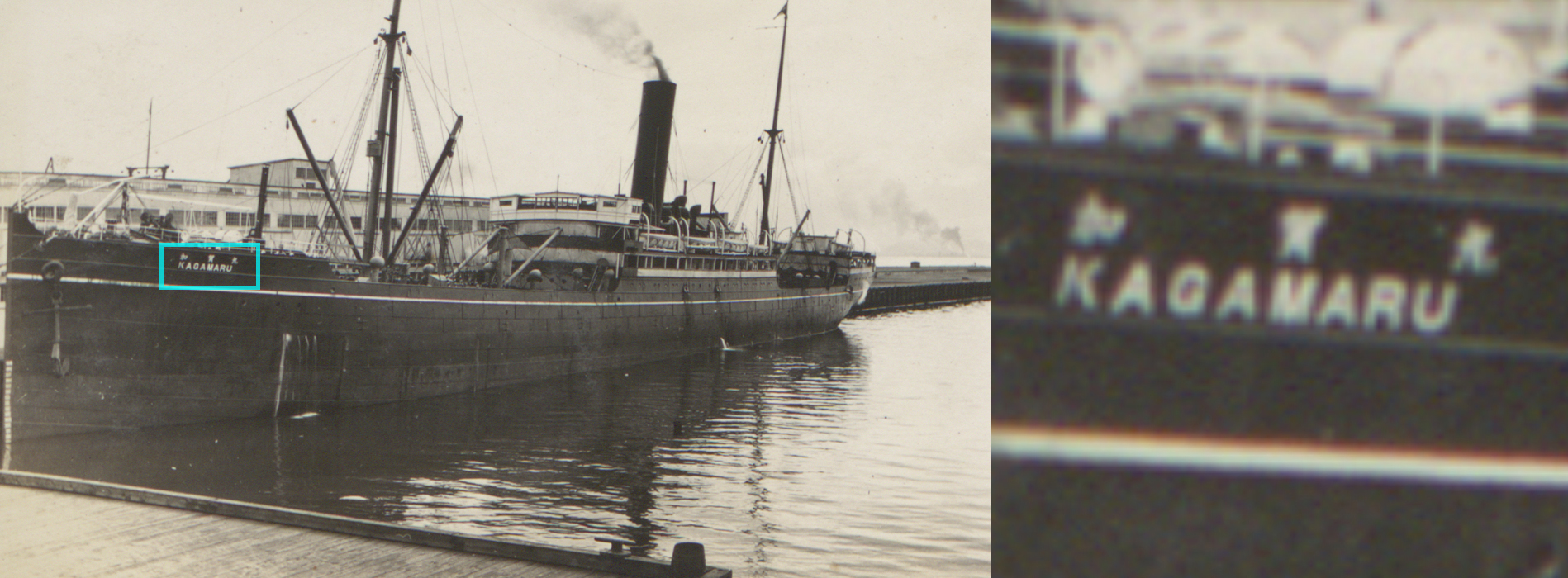
In geolocation, it is important to search for alternate spellings, especially in the case of non-english languages which may be “simplified” in english speaking newspapers. In this example, the Kaga Maru steamship appears to be one word on the ship but is written as two newspaper accounts, where it is advertised as docking at many points along China, Japan and Southeast Asia but connected only stateside in Seattle. Given the geographic footprint of the other photos in this scrapbook and the proximity of the photo with other images that resemble the city, we can be fairly confident that is where this was taken.
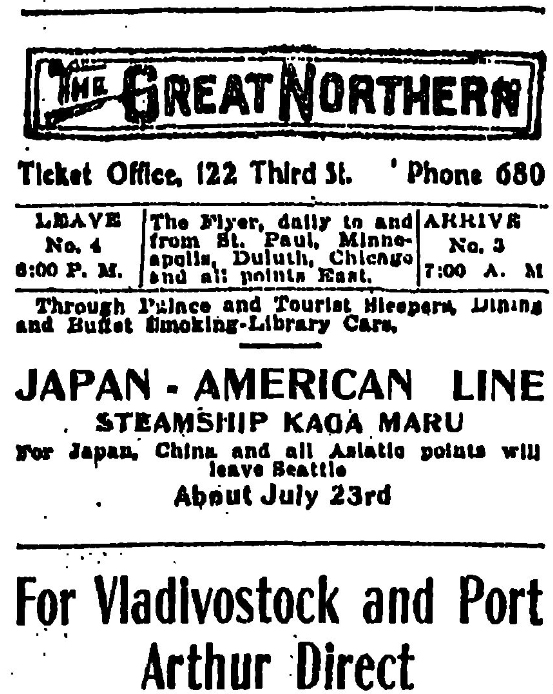
✺
Fourth Example
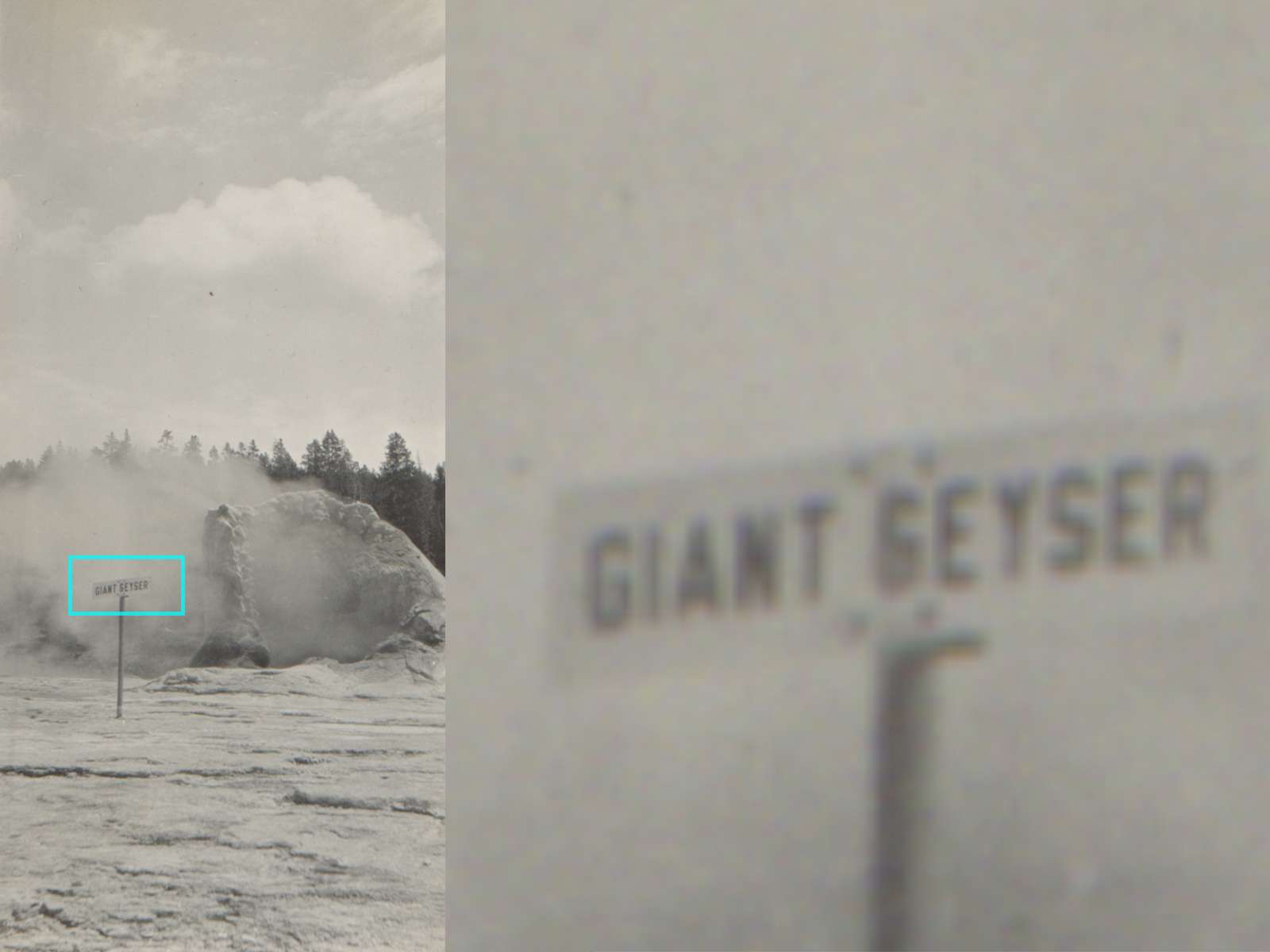
Finally, the most easily identifiable of the bunch is certainly the Giant Geyser of Yosemite National Park in Wyoming, but this does help establish the larger parameters of area that the scrapbook is likely to be within: From a base in Moscow, southeast to Yellowstone and northwest to Seattle.
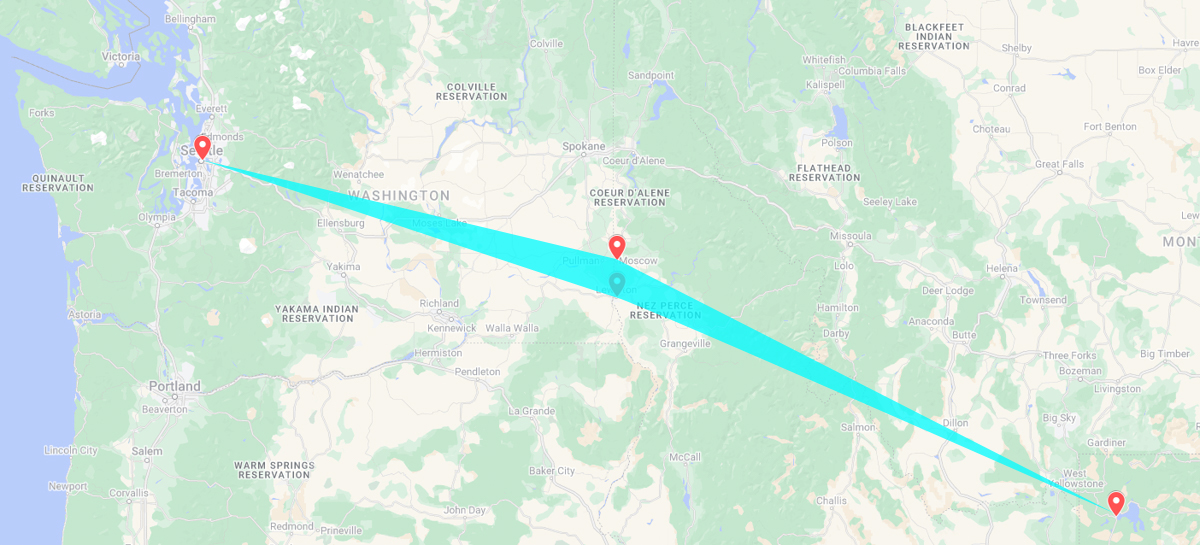
Getting these relatively simple and definitive items out of the way helps reduce the size of our potential map as we move forward to the next geolocation method.